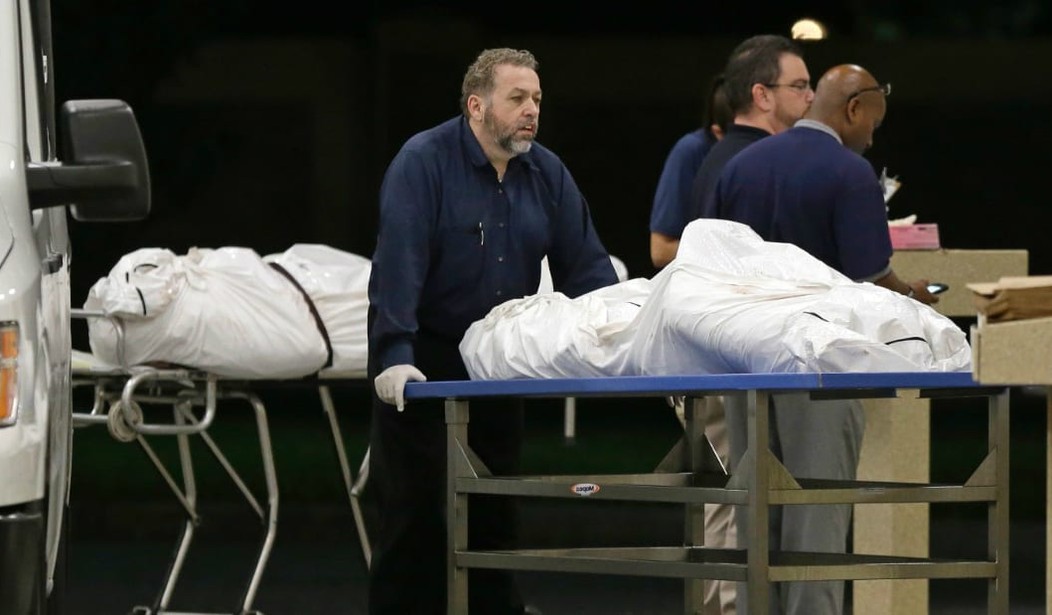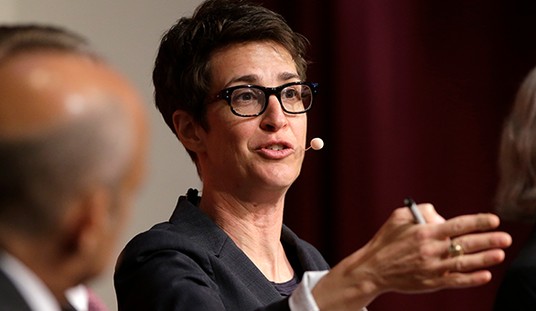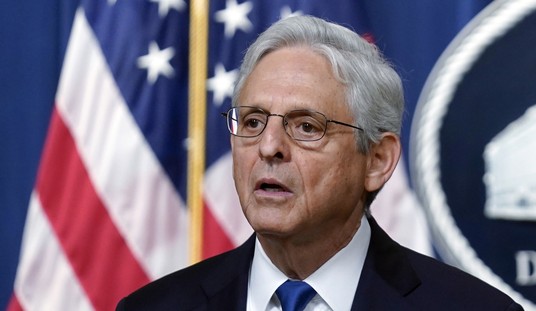Why do Americans keep getting killed in terrorist attacks by individuals already known to and investigated by the FBI?
That’s the question that the Senate Intelligence Committee will look at over the next six months in the wake of the largest terror attack on American soil since 9/11 that killed 49 and wounded 53 more, where the Orlando killer had already been investigated twice before by the FBI.
As I’ve reported here at PJ Media for nearly two years, the “Known Wolf” terrorism problem has extended to virtually every Islamic terrorist attack inside the U.S. occurring during the Obama administration.
The New York Post reports:
A US Senate committee has launched a multi-pronged probe delving into the failures of U.S. Intelligence agencies under the Obama Administration to prevent ISIS-linked domestic and international acts of terror, The Post has learned.
Oklahoma Republican Senator James Lankford, who works on the Senate Select Committee on Intelligence, is spearheading the six-month probe primarily focused on terror attacks committed by individuals who have been investigated or interviewed in the past, officials said.
Lankford noted that the FBI was unable to prevent the terror attacks in San Bernardino, Calif., Orlando, Fla. and Boston – and the American public is now keeping tabs on the country’s top law enforcement agency
[…]
Domestically, the official said, the Senate Intelligence Committee is looking into why “these bad guys” are interviewed and placed on watch lists, and then wind up committing terrorist attacks in the U.S.
Sadly, there’s a considerable backlog of cases for the committee to investigate:
Orlando: Omar Mateen had been interviewed by the FBI on three separate occasions, including an open preliminary investigation in 2013 lasting 10 months, after telling others about mutual acquaintances shared with the Boston bombers and making extremist statements. He was investigated again in 2014 for his contacts with a suicide bomber who attended the same mosque. At one point Mateen was placed on two separate terrorism databases but was later removed.
Columbus, OH: When Mohamed Barry attacked patrons with a machete at an Israeli-owned deli and later charged police shouting “Allahu Akhbar,” at which time he was shot and killed, he had already been investigated by the FBI for making extremist statements. Barry had been entered on a federal watch list and it appears remained on it until the time of the attack as his car had been flagged by authorities, but no further investigation was made.
Garland, TX: Elton Simpson and Nadir Soofi were killed in a shootout with law enforcement outside a convention center where they had planned to attack a Muhammad cartoon drawing contest. But Simpson had been known to the FBI for years before going back to his involvement in a terror cell in Phoenix. He was even prosecuted for his involvement, and while a judge found that the had lied to the FBI about his plans overseas, he ruled that there was not sufficient evidence to prove Simpson intended to commit terrorism. He was subsequently placed on the no-fly list, and the FBI opened up another investigation after he had made statements online in support of the Islamic State.
Seattle, Newark: In 2014, Ali Muhammad Brown went on a cross-country killing spree murdering 3 victims in Washington and another in New Jersey claiming that they were “vengeance” for U.S. actions in the Middle East. As a teenager Brown had reportedly trained at one of the first known U.S. terror training camps, and was later arrested in 2004 as part of a Seattle terror cell. At the time of his killing spree, prosecutors said he was on the terror watch list.
Boston: Prior to the bombing of the Boston Marathon by Tamerlan and Dzhokhar Tsarnaev in April 2013 that killed three people and injured 264 others, the FBI had been tipped off, twice, by Russian intelligence warning that Tamerlan was “a follower of radical Islam.” Initially, the FBI denied ever meeting with Tamerlan, but they later claimed that they followed up on the lead, couldn’t find anything in their databases linking him to terrorism, and quickly closed the case. After the second Russian warning, Tamerlan’s file was flagged by federal authorities demanding “mandatory” detention if he attempted to leave or re-enter the U.S. — but his name was misspelled when it was entered. An internal report of the handling of the Tsarnaev’s case unsurprisingly exonerated the FBI.
Underwear Bomber: When Umar Farouk Abdulmutallab boarded Detroit-bound Northwest Flight 253 on Christmas Day 2009 with 289 other passengers wearing a bomb intended to bring down the plane, he was already well-known to U.S. intelligence officials. The month before the attempted bombing, Abdulmutallab’s father had gone to the U.S. Embassy in Nigeria and met with two CIA officers telling them he was concerned about his son’s extremism. His name was added to the Terrorist Identities Datamart Environment database, but not the FBI’s Terrorist Screening Database or the no-fly list. When asked about the near-takedown of the flight and the missteps, then-Homeland Security Secretary Janet Napolitano remarkably told CNN that “the system worked.”
Fort Hood: Within days of Major Nidal Hasan’s shooting rampage at Fort Hood, killing 13, news reports indicated that the FBI was aware of his email correspondence with al-Qaeda cleric Anwar al-Awlaki nearly a year before he launched his terror attack. The FBI was quick to issue a press release absolving themselves of responsibility, claiming that the email exchange was innocuous and consistent with Major Hasan’s religious research. But after the emails intercepted by the FBI were made public in 2012, there were clear indications of Major Hasan’s terrorist intent. Hasan had also repeatedly given PowerPoint briefings that proved to be highly controversial to his fellow Army colleagues that threatened insider attacks by Muslims if they weren’t released as “conscientious objectors.”
Little Rock: When Carlos Leon Bledsoe gunned down two U.S. Army soldiers in front of a Little Rock recruiting center in June 2009, killing Pvt. William Long, it was not his first contact with the FBI. Bureau agents had interviewed Bledsoe in Yemen and after his return to the U.S. in 2008, but had failed to follow up. After the Little Rock shooting, FBI officials said that he was motivated by “political and religious motives,” but refused to identify the incident as a terrorist attack.
Going back to October 2014 when I first identified the problem of “Known Wolf” terrorism and coined the phrase, I’ve documented the “Known Wolf” phenomenon both here in the U.S. and in other Western countries:
Oct. 24, 2014: ‘Lone Wolf’ or ‘Known Wolf’: The Ongoing Counter-Terrorism Failure
Dec. 15, 2014: Sydney Hostage Taker Another Case of ‘Known Wolf’ Syndrome
Jan. 7, 2015: Paris Terror Attack Yet Another Case of ‘Known Wolf’ Syndrome
Feb. 3, 2015: French Police Terror Attacker Yesterday Another Case of ‘Known Wolf’ Syndrome
Feb. 15, 2015: Copenhagen Killer Was yet Another Case of ‘Known Wolf’ Terrorism
Feb. 26, 2015: Islamic State Beheader ‘Jihadi John’ Yet Another Case of ‘Known Wolf’ Terrorism
Apr. 22, 2015: Botched Attack on Paris Churches Another Case of “Known Wolf” Terrorism
May 4, 2015: Texas Attack Is Yet Another Case of ‘Known Wolf’ Terrorism
June 26, 2015: France’s Beheading Terrorist Was Well-Known By Authorities
July 16, 2015: Report: Chattanooga Jihadist Was Yet Another ‘Known Wolf’ Terrorist, Anonymous Feds Dispute
Aug. 22, 2015: European Train Attacker Another Case of ‘Known Wolf’ Terrorism
Oct 14, 2015: Yet Again: Turkey, Israel Terror Attacks Committed by “Known Wolves”
Nov 14, 2015: One Paris Attacker Was Previously Known to Authorities, Marks Fifth ‘Known Wolf” Attack in France This Year
Feb 16, 2016: Machete Attack in Ohio Yet Another Case of ‘Known Wolf’ Terrorism
May 16, 2016: NBC News Reports Yet Another Case of ‘Known Wolf’ U.S. Terrorists
June 12, 2016: Orlando Night Club Attack by “Known Wolf” Terrorist Previously Investigated by FBI
From all available evidence it seems clear that the Senate Intelligence Committee’s investigation into the ‘Known Wolf’ terror problem comes none too soon.









Join the conversation as a VIP Member